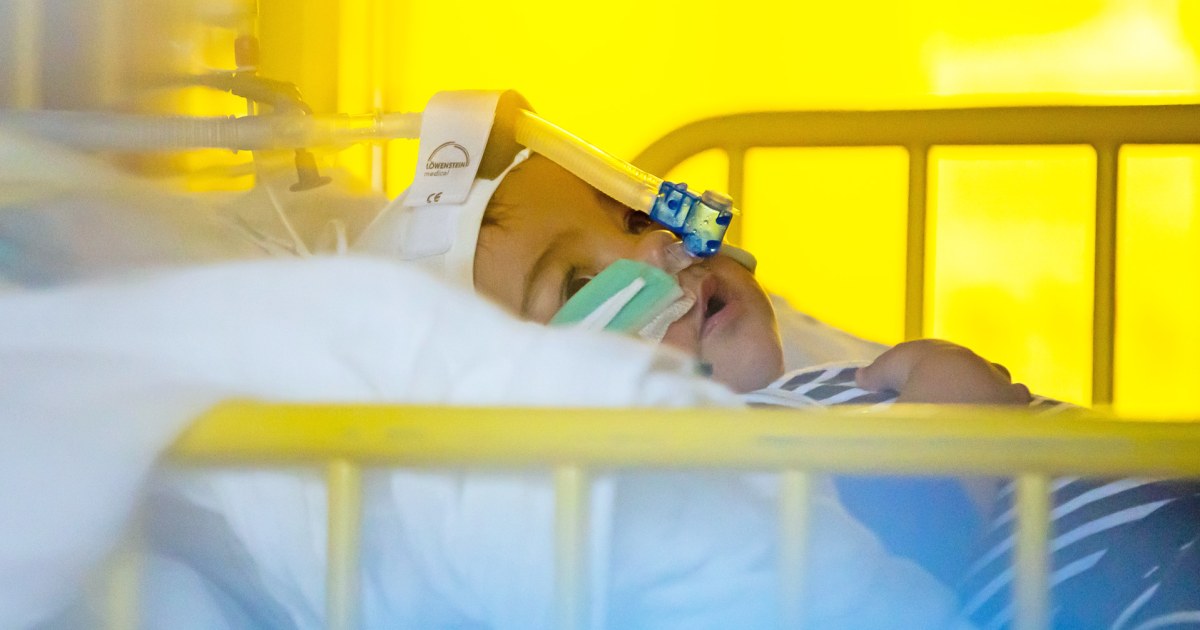Infection
Most babies who got very sick from RSV last winter were previously healthy, study finds
Last winter, a particularly severe season of RSV overwhelmed pediatric hospitals with a surge of sick infants struggling to breathe as their lungs filled with secretions.
RSV, or respiratory syncytial virus, can be especially dangerous for preterm infants as well as those with underlying medical conditions, but research published Tuesday underscores that healthy babies are also at risk of becoming very ill.
The study, published Tuesday in JAMA Network Open, found that the majority of babies who ended up in the intensive care unit with RSV in late 2022 were full term and previously healthy.
“This can be a serious illness in young, healthy infants,” said lead study author Dr. Natasha Halasa, a professor of pediatric infectious diseases at Vanderbilt University Medical Center in Nashville, Tennessee.
The virus is “super common” and most kids are infected by 2 years of age, she said, but the research suggests it can be hard to predict which babies are going to get very sick.
In the study, Halasa and a research team from across the U.S. looked at data on 600 infants from 39 hospitals in 27 states who were enrolled in the Centers for Disease Control and Prevention-funded RSV Pediatric Care registry.
All of the babies were admitted to the intensive care unit between October and December of 2022, a year when cases surged after dropping dramatically during the Covid pandemic.
About 81% of the babies in the study did not have an underlying medical condition, 29% were born prematurely and most were very young — the median age was 2.6 months. About 24% of the infants had to be intubated to help them breathe. Two babies died.
The study’s senior investigator, Dr. Angela Campbell, of the CDC’s Coronavirus and Other Respiratory Viruses Division, noted that while infants younger than 3 months and infants born prematurely were more likely to need intubation, most of the intubated infants in the study were born at term.
“Our study helps highlight the need for preventive strategies for all infants,” Campbell said.
Why last season was different
Every year, RSV infections cause about 2 million doctor visits, 80,000 hospitalizations and up to 300 deaths in children under five, according to the Centers for Disease Control and Prevention.
About a third of the population gets RSV in any given season, said Dr. C. Anthoney Lim, the director of pediatric emergency medicine at Mount Sinai Health System in New York City. For most healthy adults, it causes cold-like symptoms like a runny nose, cough or headache that resolve with time. It can be more serious in older adults and young children, particularly infants under 6 months.
RSV tends to peak in the fall and winter, spreading rapidly at schools and day-care centers. Small children are particularly at risk from the virus because it can infect the lower lungs and cause pneumonia or bronchiolitis, a mucus-causing inflammation that can block their tiny airways.
Early in the pandemic, cases of RSV and other respiratory viruses like flu dropped to low levels, thanks to mitigation measures such as mask wearing and social distancing, Campbell said. In 2021 and 2022, there were some spikes at times of the year not normally associated with RSV, including the spring.
But it wasn’t until the end of 2022 that the virus really came roaring back, as many young children were exposed to RSV for the first time.
Dr. Priya Soni, an assistant professor of pediatric infectious disease at Cedars-Sinai Guerin Children’s Medical Center in Los Angeles, praised the new study.
It “was a great opportunity to look at some of the factors related to severe infection in kids,” said Soni, who was not involved with the research.
Will RSV spike again this year?
It’s not clear if the 2023-2024 season will be as bad as 2022, but a newly approved injection — a monoclonal antibody shot called Beyfortus — could decrease cases in infants.
“I think that the [shot], more than anything else, may have a significant impact on what RSV will look like this season,” Lim said. “It can definitely be a game changer.”
The preventative drug — which can lower the risk of RSV for five months, the length of an average RSV season — was approved by the Food and Drug Administration in July. In early August, the CDC’s Advisory Committee for Immunization Practices unanimously recommended that it be given to all newborns and infants below 8 months of age going into their first RSV season. A second dose can be given to high-risk children — like those who are severely immunocompromised — entering their second RSV season, up to age 2.
On Tuesday, the American Academy of Pediatrics recommended that all infants get Beyfortus and urged equitable access for all. The shot is expected to cost $495, although the price will be covered depending on insurance. The most common side effects are rash and injection site swelling.
Another option is also on the way: In May, an FDA advisory panel recommended the approval of a vaccine given to women during pregnancy to prevent RSV in newborns. The FDA is expected to make a decision on approval this month, according to Pfizer, which makes the vaccine.
“This is a very exciting time,” Soni said. “We haven’t seen too much progress with RSV and with this new long-acting monoclonal we hope that it’s going to make a huge impact for our winter season coming up, where we may not see as much of a hospital burden with children severely ill with this condition.”
Handwashing with soap and water, avoiding close contact with people who are sick, encouraging children to cover their mouths when they cough, and not sharing cups or toys can also prevent the spread of RSV.
Two RSV vaccines for adults ages 60 and older were approved earlier this summer.Follow NBC HEALTH on Twitter & Facebook.

